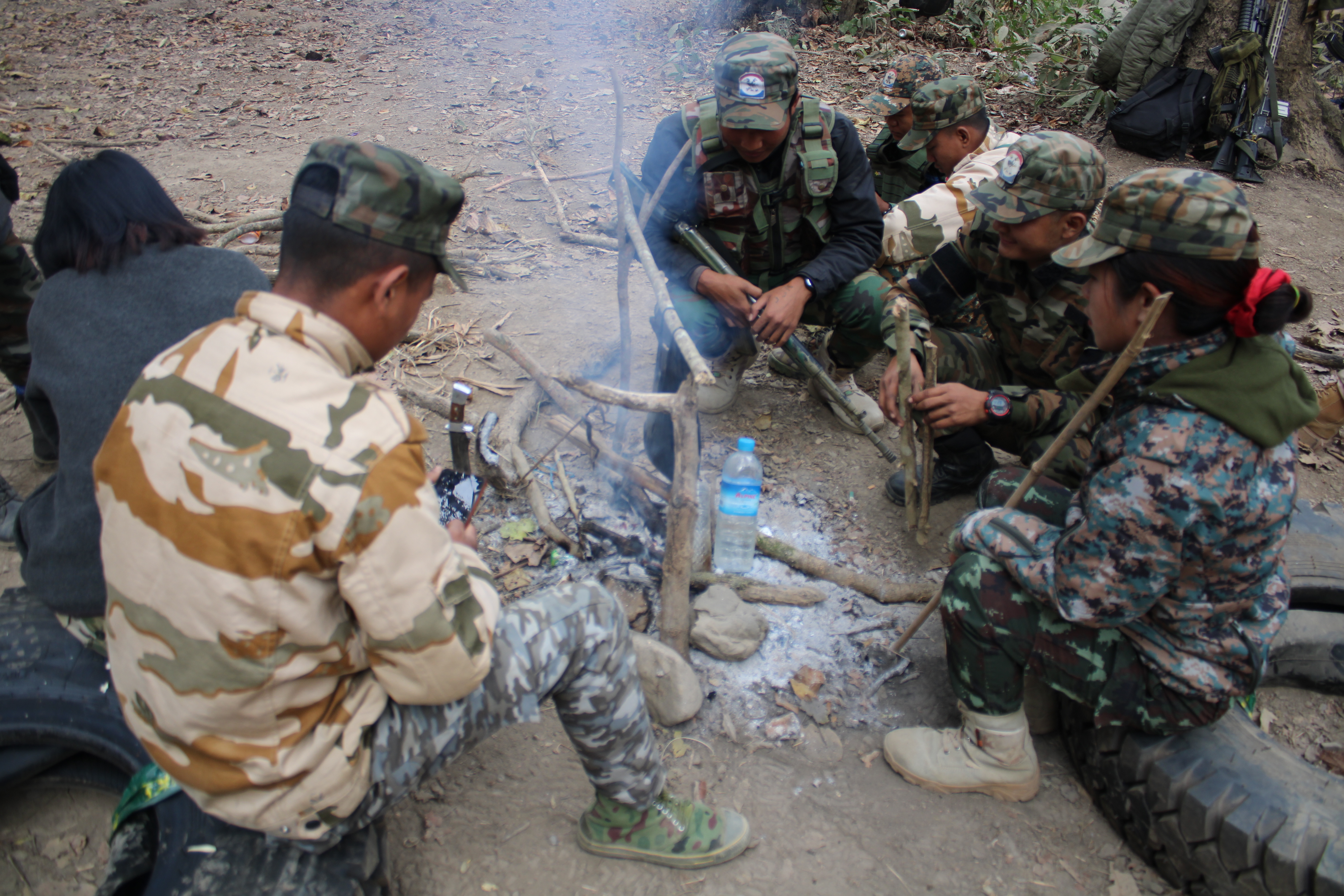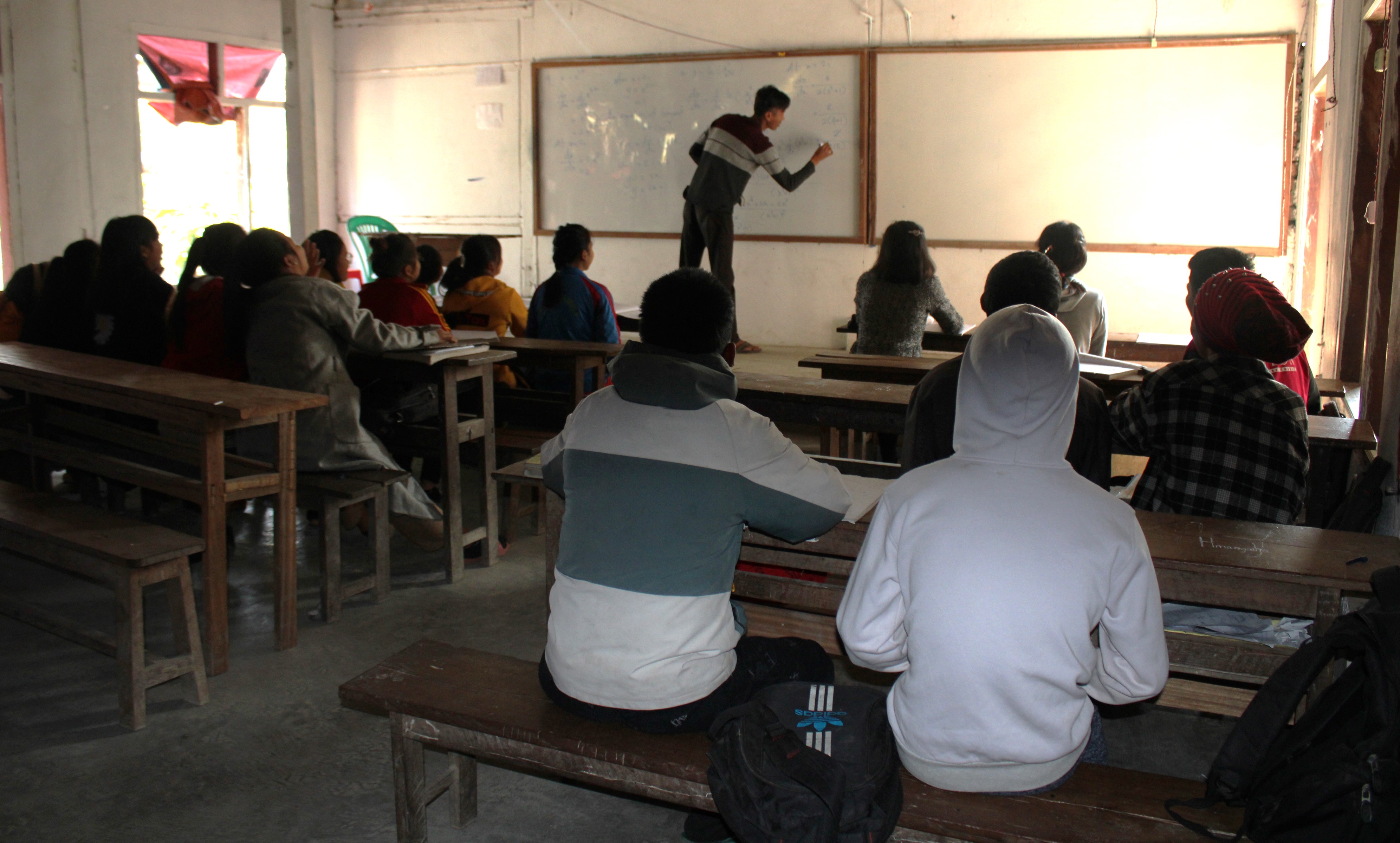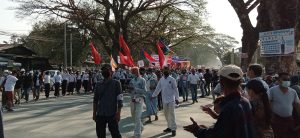Myanmar has been ruled by a military junta for most of the years since it emerged independent from British colonial rule in 1948. The country’s journey as a parliamentary democracy ended in 1962 when General Ne Win toppled the government and held power for the next 26 years. He stepped down after the protests in 1988 but the situation hardly changed in the country. Myanmar remained under military rule and suffered misgovernance and widespread poverty.
A process of democratization was initiated in 2011. President U Thein Sein put in place a civilian-military administration model that was followed by the release of political prisoners, Aung San Suu Kyi’s return to politics after the by-election in 2012, and finally, the multi-party general elections three years later. The economy was opened, freedom of the press promoted, access to the internet allowed, and ceasefire agreements firmed up with ethnic insurgent outfits.
Then on February 1, 2021, the Myanmar military staged a coup and ousted the elected government. Hopes generated by a few years of quasi-democratic rule were dashed. Anti-coup protests erupted demanding the release of Aung San Suu Kyi and her supporters and the restoration of parliament. The trajectory of the movement was soon transformed, with the protesters demanding the abolition of the 2008 constitution, the establishment of a federal democratic polity, and a new military under civilian control.
Functionaries of resistance groups and the civil disobedience movement (CDM) whom I spoke to during my travels in Chin State and Sagaing Region between January and March this year said that the current Spring Revolution in Myanmar is quite different from the anti-junta uprisings of 1988 and 2007, which were led largely by students and monks respectively.
“The Target Is the Capital Now, Not Defending Territories”
In an interview on February 6 at Camp Victoria, the military headquarters of the Chin National Front (CNF), Vice Chairman Dr. Sui Khar identified two fundamental aspects that were unique to the Spring Revolution in Myanmar. “Earlier, only the ethnic minorities had been engaged in conflict with the junta. Now the mainland [majority Bamar-inhabited territories] has also taken up arms against the regime, which is evident from the emergence of so many resistance groups,” said Sui Khar.
The CNF vice chairman pointed out that the primary goal of the Spring Revolution was toppling the military regime. “The EAOs [ethnic armed organizations] had been fighting to defend their respective territories over the past many decades. The target is the capital [Naypyidaw] now, not defending territories. The fighting will stop only after the military-appointed State Administration Council is abolished,” he said.
Incidentally, some Bamar-inhabited regions (such as Sagaing Region) have been among the worst affected zones in Myanmar after the coup in 2021. This is similar to the situation in Kachin, Chin, and Karen states.
In addition to joining the resistance groups as combatants, a section of Bamar expatriates is also actively engaged in raising funds abroad for the revolution in Myanmar. Resistance leaders said that a large number of teachers and doctors who joined the CDM and are now teaching in schools and healthcare facilities established by the opposition National Unity Government are Bamar. In the Indian border state of Manipur, Spring Schools have been set up by teachers from Tamu for the children of refugees who fled their homes after their villages were raided by the military.
“The Taste of Democracy Is a Game-changer”
The quasi-civilian governments in Myanmar between 2011-21 had a decisive impact on the mindset of the people. When the country embarked upon the path of democracy and reforms in 2011, there was exposure to the outside world. It enabled people to compare their own situation with that in other countries and understand how policies adopted by successive military regimes had been detrimental to Myanmar.
“This period brought a vast change in the outlook of the people. They were convinced that the military should not rule the country again,” said Salai Mang Hre Lian, program manager of Chin Human Rights Organization (CHRO). Digital technology has played a role too. “More information has created a new consciousness, which in turn has triggered new aspirations,” he said, adding that “the taste of democracy is a game-changer.”
Research scholars from the ISEAS-Yusof Ishak Institute in Singapore have highlighted how the conditions during the democratic interlude produced civil society activists who organized agitations on issues of social justice. They cited examples of many protests in the country during the period, including those against copper mining at Letpadaung and the strikes in the garment sector. They explained how these protests, coupled with the efforts by NGOs and community-based organizations to address poverty and related issues, represented “a broad base of mostly invisible reform that was quietly restructuring politics at the grassroots.”
Simply put, after giving Myanmar’s people a taste of freedom, however limited, the military is now finding it impossible to put the genie back in the bottle and return to its previous style of direct rule.
Gen Z in Aggressive Action

Young fighters of the Chin National Army at Camp Victoria in Myanmar’s Chin State. Photo by Rajeev Bhattacharyya.
Among the many consequences of the coup has been the lead role of the tech-savvy Gen Z in the resistance movement. Most of the people active in resistance groups and the CDM I interacted with were 20 to 35 years old. Only two leaders whom I interviewed – Dr. Sui Khar and founding member of the Kalay People’s Defense Force (PDF) Pu Vela – were in their 60s.
Research conducted by different institutes revealed that Gen Z comprises around one-quarter of Myanmar’s population. They attained adulthood in the 10 years after 2011, as the country underwent political liberalization. An estimated 4.8 million members of Gen Z voted for the first time in the November 2020 election. In their eyes, the military regime is synonymous with poverty and repression. And they are determined not to return to the gloomy past.
Unlike the previous generations, Gen Z has grown up with the internet, providing them with unhindered access to diverse sources of information. Incidentally, internet penetration had been rapid in Myanmar, with the number of users increasing by 3.5 million between 2019-21, bringing the total to 23.65 million users at the time of the coup.
“The internet and social media have contributed to a nationwide movement. It has helped in forging linkages, mobilization, and discussion of the goals among a large audience. The impact was certainly multiplied,” said a resistance fighter in the Indian border town of Moreh in Manipur, who did not wish to be named.
The internet has had a particularly significant impact on the local weapons manufacturing units in Sagaing Region. Two technicians engaged in manufacturing weapons at Kalay admitted that they acquired the know-how online.
Additionally, it was through online endeavors that the expatriate community was able to raise funds from across several countries in the world and devise a network for remittances to the rebel groups. Such transnational efforts were not discernible in previous uprisings, especially in 1988 when rebels were reportedly dependent upon the supply of weapons and funds from foreign countries.
Middle Class-led Revolution
Almost all the leadership and commanders of the rebel groups I met in Myanmar hailed from middle- or lower-middle-class backgrounds. An apt illustration is the commander of Chin Rifles, who is known by his nom de guerre Black Cat. He attended school in New Delhi and was employed in a firm in India before he decided to return to Kalay to join the resistance movement. Senior functionaries of other organizations such as the Mountain Eagle Defense Force, Chin National Defense Force, Chinland Defense Force Thantlang, and the PDFs active in the border district of Tamu are also from a similar social background.
Sir John, a leader of the Pa Ka Pha in Kalay, claimed that “leaders and functionaries of the resistance groups [in Kalay] are mostly from the middle class. A large number of them were semi-employed when the movement started, without any permanent occupation.”
Resistance fighters have stressed other unique aspects of the social profile of functionaries engaged in the conflict. Many among them are of the firm opinion that the “educated classes” have abstained from participating in the resistance. “But there are also exceptions,” said Victor, who is associated with a resistance battalion in Tamu. “There are participants in Mandalay and Yangon, who are highly educated and they belong to the upper middle classes. Many have also relocated to the Karen region.”
Engagement of people from a strictly rural background in the armed groups appears to be more common in Chin State than in Sagaing Region, where more PDFs have emerged. A middle-rung officer of the Chin National Army (CNA) claimed that functionaries in his organization belonged to all income groups, since it was “a revolution of the people against the military regime.” Almost all the senior functionaries I met in Chin State, including a few who lived abroad, were from the middle class.
NUG, NCGUB, and New Challenges
The uprising and the crackdown in 1988 triggered the formation of the Democratic Alliance of Burma (DAB) and the National Coalition Government of the Union of Burma (NCGUB) two years later by members of the newly elected legislature, who had fled to Thailand. Subsequently, another front called the National Council of the Union of Burma (NCUB) was formed by members of the NCGUB and the ethnic armed groups.
However, as eminent journalist and author Bertil Lintner said, the NCGUB never became more than an “acronym.” The DAB fizzled out after some of its members firmed up ceasefire agreements with the military.

A school established by the Pa Ka Pha (Local Defense Force) at Kalay in Myanmar’s Sagaing Region. Photo by Rajeev Bhattacharyya
The NUG, which was formed two months after the coup in 2021, is much more than either the DAB or NCGUB in terms of its roadmap, reach, efforts to forge a united front against the military, and the success achieved so far. The Federal Democracy Charter is designed to replace the 2008 constitution and forbids gender discrimination, with several provisions for gender equality. Twenty percent of the NUG Cabinet comprises women while representatives from ethnic minorities make up more than 50 percent of its members.
On May 5, within a few weeks of the NUG’s emergence, the PDFs were formed, which was followed by the declaration of the “people’s defensive war” against the junta on September 7, 2021.
Not surprisingly, the challenges faced by the NUG have also been markedly different from those encountered by the DAB or NCGUB.
The NUG is engaging in serious efforts in Sagaing Region and Chin State to unite the older and experienced EAOs and the newly formed PDFs and the Chinland Defense Force (CDF). While a great deal of success has been achieved in Chin State under the leadership of CNF, much remains to be done in Sagaing Region, where many groups have reportedly prefer to function independently. If some resistance fighters in Tamu are to be believed, then the situation is not very different in some other regions such as Magwe and Bago, where the outfits lack coordination and unity.
The NUG’s lack of control over all the groups means that the guidelines that it promulgates are not strictly followed across the country. Although the groups are barred from recruiting children and engaging them as combatants, I saw children in combat and non-combat roles in the camps of some outfits in Chin State and Sagaing Region.
Instances of killings on mere suspicion have surfaced intermittently since the war began more than two years ago. Last year in August, seven residents at Chaung-U in Sagaing Region were arrested by the head of Ngar Shan village people’s security team on suspicion of being dalans (junta informants). They were allegedly killed by the group without being interrogated.
The NUG has found it challenging to provide weapons to the PDFs and smaller squads combatting the military regime. A majority of the resistance leaders interviewed in Kalay and Tamu voiced serious concerns over the lack of funds and weapons. Political analyst Ye Myo Hein said the NUG and EAOs have managed to procure only 20-25 percent of all the weapons needed by anti-junta groups. Homemade rifles comprise 30-40 percent of PDF weaponry. The NUG has admitted that the supply of weapons to the rebel groups is a “weakness” even though 95 percent of its budget is spent on arming the PDFs.
Resistance functionaries are critical of the “huge gap” between the NUG leadership and the ground workers of the Spring Revolution. In particular, they are troubled over the NUG’s conduct of the war.
“This is not a complaint but a suggestion to the NUG that people at the higher level, who have been tasked with coordinating with PDFs and EAOs should be experienced people who are aware of the ground realities,” said Demo Htoo, former police sergeant at Tamu and head of a resistance squad.
The military never expected the Spring Revolution to endure for so long. Neither did the military expect the resistance to spread so far and wide that it is now nearing its doorstep in Naypyidaw.
The opposition has survived and it appears to have developed unique characteristics in different regions as evidenced by the dissimilar situations in Chin State and Sagaing Region. With the movement exhibiting so many novel features, the consequences are also bound to be different from the previous rebellions in Myanmar.
Many resistance leaders believe that the Spring Revolution will also be the last in the country.

































